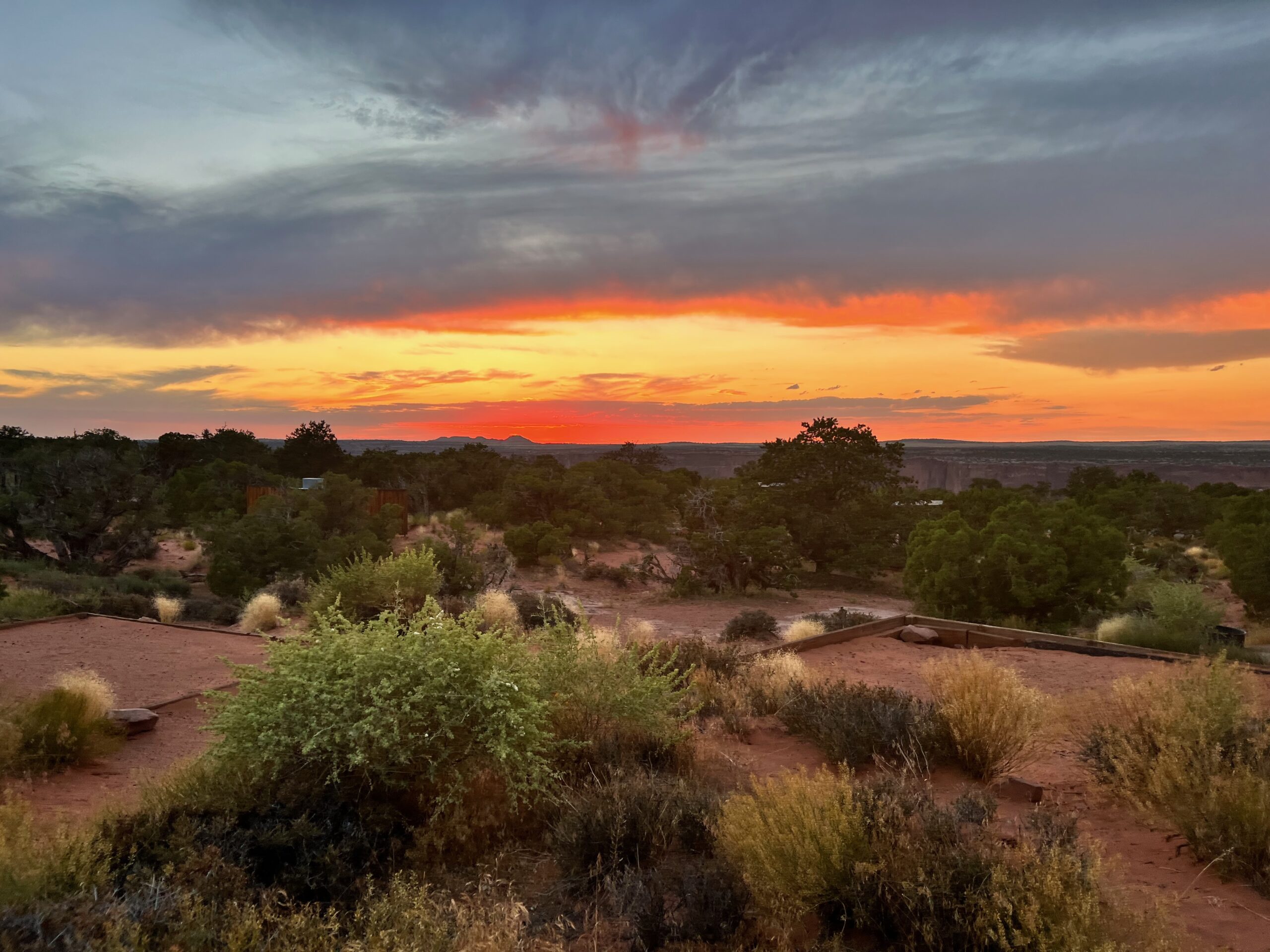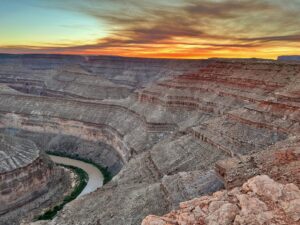If you’re ready to camp at sites with full electric service close to everything Moab has to offer, Kayenta Campground may be the perfect choice for you.
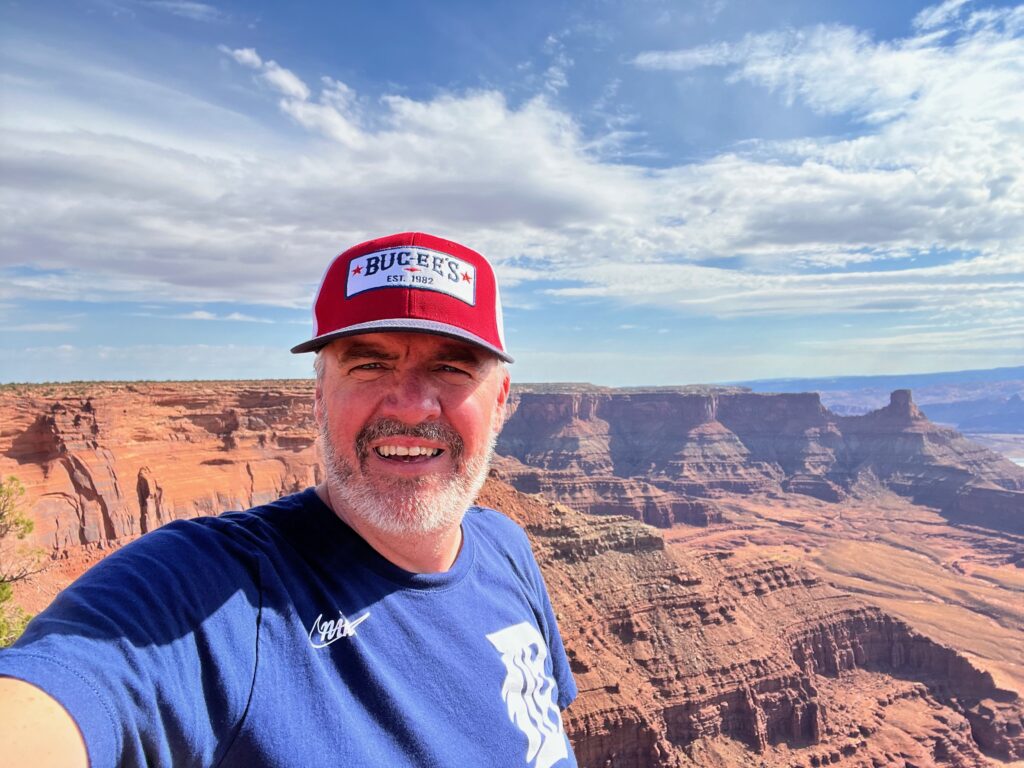
Set high above the Colorado River, Dead Horse Point State Park offers some of the most stunning desert landscapes in the American Southwest. It’s a place where the earth stretches out in a canvas of red rock, deep canyons, and towering mesas, painted with the vibrant hues of sunrise and sunset. Today, I invite you to journey with me to one of the park’s best-kept secrets: the Kayenta Campground, a haven where the sky unfolds in an array of colors at dawn and dusk.
Let’s get started!
Table of Contents
- Why Dead Horse Point?
- Getting to Know Kayenta Campground
- Preparing for Your Camping Trip
- Setting Up Camp: Tips and Best Practices
- Maximizing Sunrise and Sunset Experiences
- Exploring Beyond the Campsite
- Sustainability and Leaving No Trace
- Final Thoughts on Kayenta Campground
- Frequently Asked Questions
Why Dead Horse Point?
The allure of Dead Horse Point lies in its unique blend of natural beauty, serenity, and the dramatic overlook it provides above the winding Colorado River. This state park is not just a destination; it’s an experience, especially for those who seek to immerse themselves in nature’s splendor from sunrise to sunset. The park’s history is as layered as the rock formations that define its landscape, with each stratum telling a story of ancient oceans, rivers, and deserts that have shaped this land over millions of years.
Getting to Know Kayenta Campground
Kayenta Campground is the heart of camping at Dead Horse Point, offering facilities that blend seamlessly with the natural environment. The campground provides visitors with a choice of sites suited for tents, RVs, and even yurts, each offering its own unique view of the surrounding desert. What sets Kayenta apart are the unparalleled opportunities to witness the sky’s transformation during the golden hours of sunrise and sunset, making every stay an unforgettable spectacle.
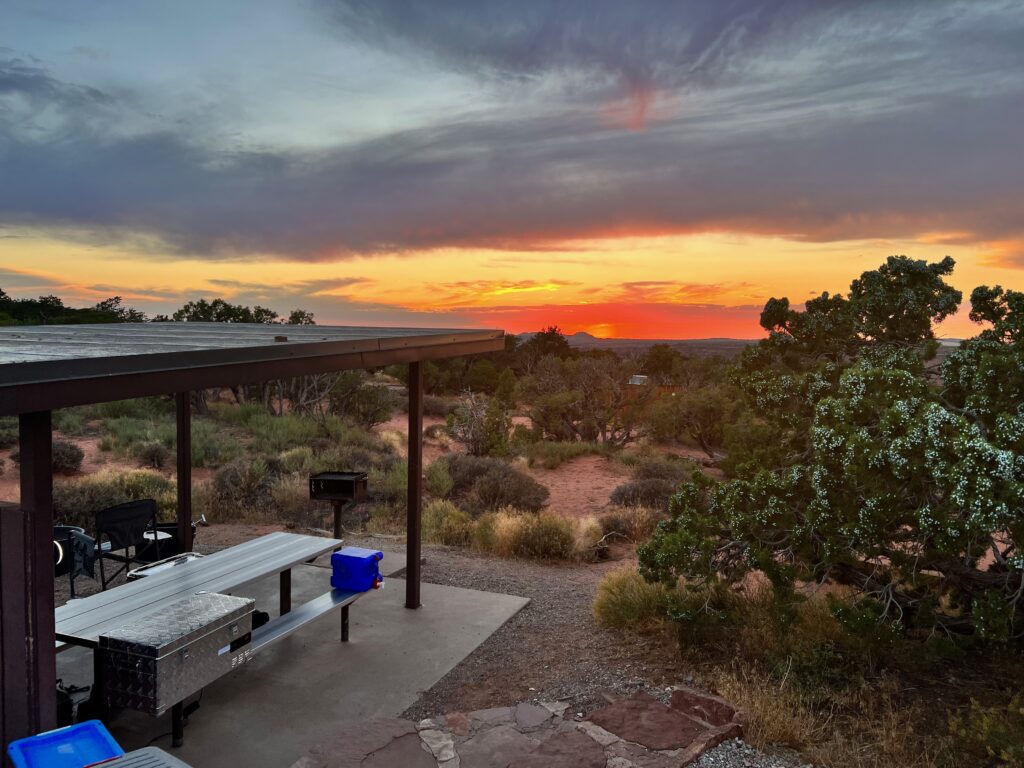
Preparing for Your Camping Trip
To fully embrace the Dead Horse Point experience, preparation is key. The essentials for a comfortable stay include plenty of water, as the desert climate demands hydration above all. Sunscreen, hats, and light, long-sleeved clothing will protect you from the sun’s intensity, while quality camping gear ensures a restful night under the stars. Given the campground’s popularity, booking your site in advance is a must, especially if you aim to secure a spot with the best views of the dawn and dusk skies.
Essential Details:
- Operating Days: The campground is open to visitors mid-February through December 1st.
- Day Use Fee: $10 per vehicle up to 8 people.
- Camping Fee: $50 per night for RV sites with electric hookups.
- Extra Vehicle Fee: $20 per night
- Check-in Time: 3:00 pm
- Check-Out Time: 12:00 pm
- Amenities: Restrooms, showers, picnic tables, fire rings, camp store, and a dump station.
- Reservations: Visit Reserve America
- Cell Service: My AT&T coverage was spotty but functional.
Setting Up Camp: Tips and Best Practices
Choosing the right campsite is crucial for maximizing your enjoyment of Dead Horse Point’s natural beauty. Sites on the eastern edge of the campground offer prime views of the sunrise, as the first light of day illuminates the canyon depths. Conversely, western-facing sites are perfect for sunset enthusiasts, where the sky and rock formations glow in fiery hues as the day comes to a close. When setting up your camp, consider the direction of the wind and sun to ensure your tent or RV provides a comfortable refuge throughout your stay.
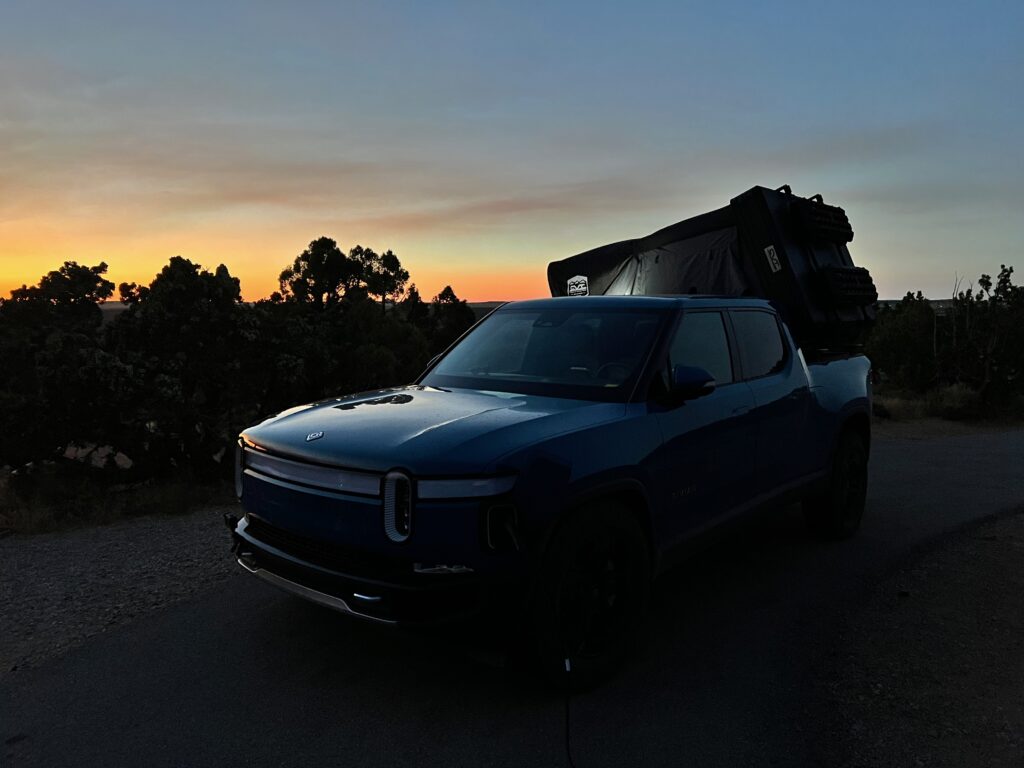
Maximizing Sunrise and Sunset Experiences
There’s something magical about greeting the day at Dead Horse Point, as the sun peeks over the horizon, casting a warm glow across the landscape. To capture this moment, I recommend finding a quiet spot near the West Rim Trail, where the panoramic views are unmatched. As the day ends, the park’s overlook provides a front-row seat to one of nature’s most spectacular shows. The setting sun, reflected in the river’s winding path below, creates a moment of pure tranquility and awe.
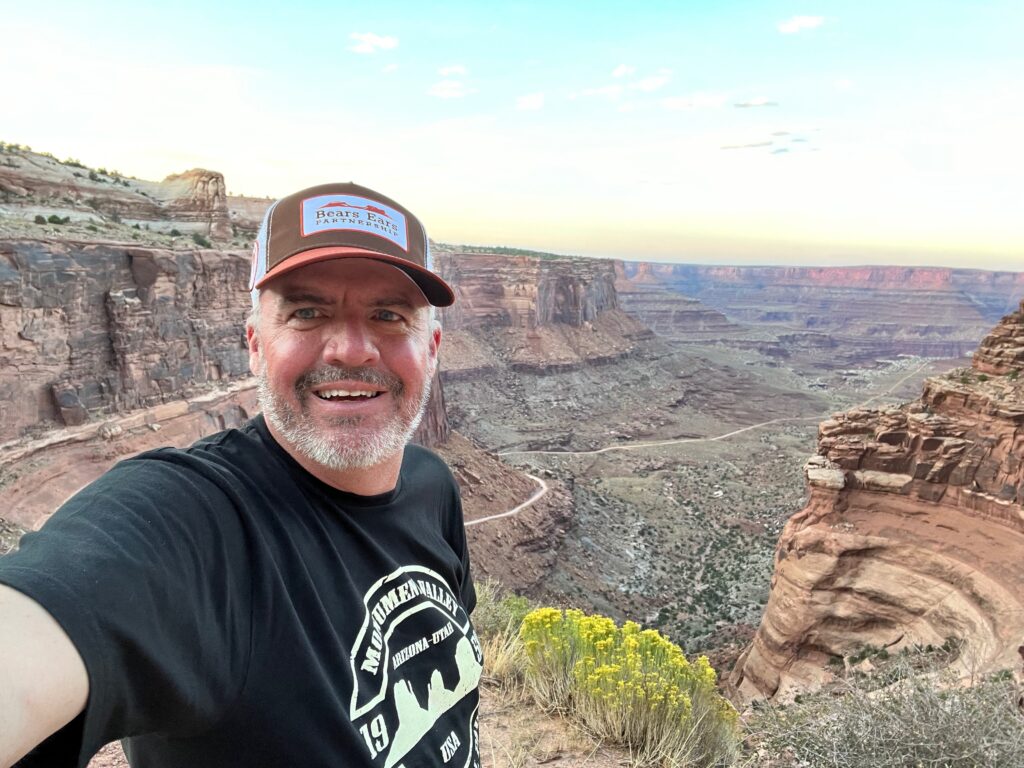
Exploring Beyond the Campsite
Just a quick drive from Dead Horse Point State Park, you’ll find many incredible places and trails to explore. Canyonlands National Park is nearby, offering extensive hiking opportunities and breathtaking vistas. The scenic drive along the Shafer Trail is another must-do, providing dramatic views of the park’s rugged landscape. Arches National Park is also near Dead Horse Point, 25 miles away.
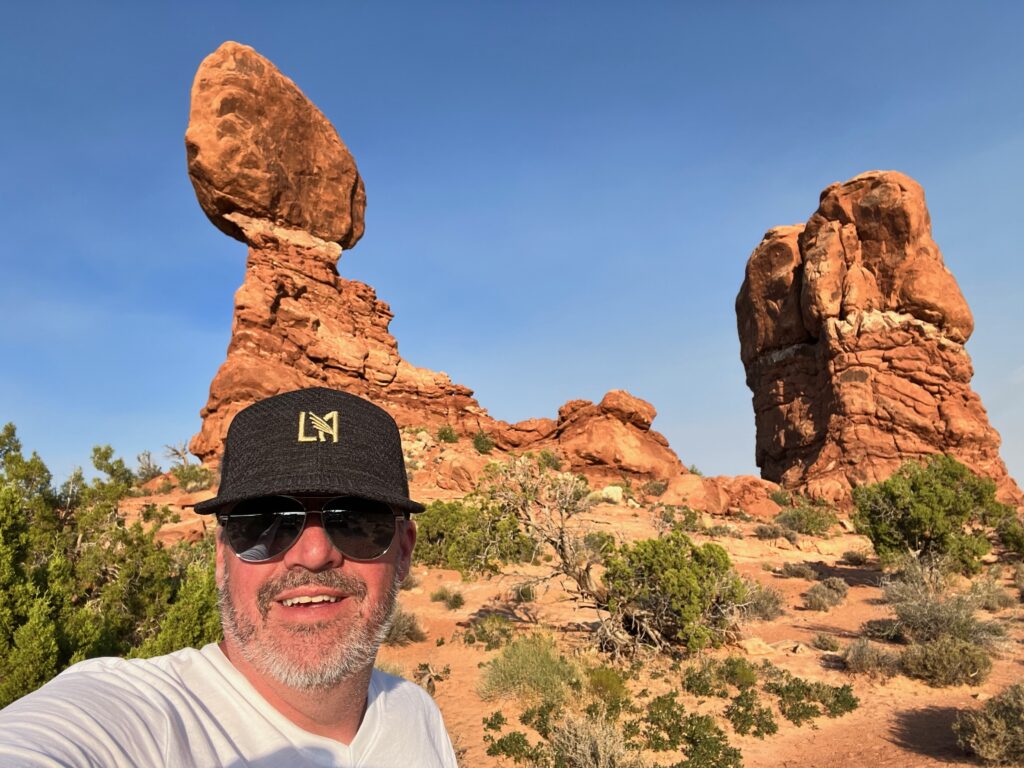
Pro Tip: If you are heading over to Canyonlands, be sure to stop at the iconic Mesa Arch for a stunning sunrise photo opportunity.
Sustainability and Leaving No Trace
Following the Leave No Trace principles is crucial at a breathtaking spot like Dead Horse Point. Campers should see themselves as guardians of this remarkable place, ensuring it remains pristine for future visitors. This means packing out all trash, minimizing campfire impact, and respecting wildlife. By following these simple rules, we can all play a part in preserving the park’s natural beauty.
Final Thoughts on Kayenta Campground
Kayenta Campground at Dead Horse Point State Park is not just a place to pitch your tent; it’s a gateway to a world of ancient geological formations, star-filled skies, and serene desert landscapes. Every visitor finds a piece of the canyon that speaks to the soul, making it a destination that should be on every adventurer’s bucket list.
If there is something you would like to know that this article should have covered, drop a question in the comment box below the FAQs ⬇️
Frequently Asked Questions
Is Dead Horse Point worth visiting?
Yes, Dead Horse Point is worth visiting. It offers stunning panoramic views of the Colorado River and the dramatic canyon landscape. The state park is known for its breathtaking overlooks, especially at sunrise and sunset, which provide excellent photo opportunities. Additionally, there are several well-maintained hiking and biking trails for those looking to explore the area’s natural beauty actively.
Is the road to Dead Horse Point State Park paved?
Yes, the main access road, State Route 313, is a well-maintained paved road that leads directly to the park. This makes it easily accessible for all types of vehicles, including standard cars and RVs.
Is Dead Horse Point State Park dog-friendly?
Yes, Dead Horse Point State Park is dog-friendly. Dogs are allowed in the park, including on the hiking trails, if they are kept on a leash no longer than six feet. Owners are also required to clean up after their pets.
How big is Dead Horse Point State Park?
Dead Horse Point State Park covers approximately 5,362 acres. The park offers a variety of landscapes, including dramatic cliffs, sweeping desert vistas, and the iconic overlook of the Colorado River. This expansive area provides plenty of space for outdoor activities such as hiking, mountain biking, and photography, making it a popular destination for nature enthusiasts.
Can you have alcohol in state parks in Utah?
Alcohol is permitted in most state parks, including Dead Horse Point, but with certain restrictions. It’s important to check the latest regulations before your visit and always consume responsibly, respecting the environment and other visitors.

